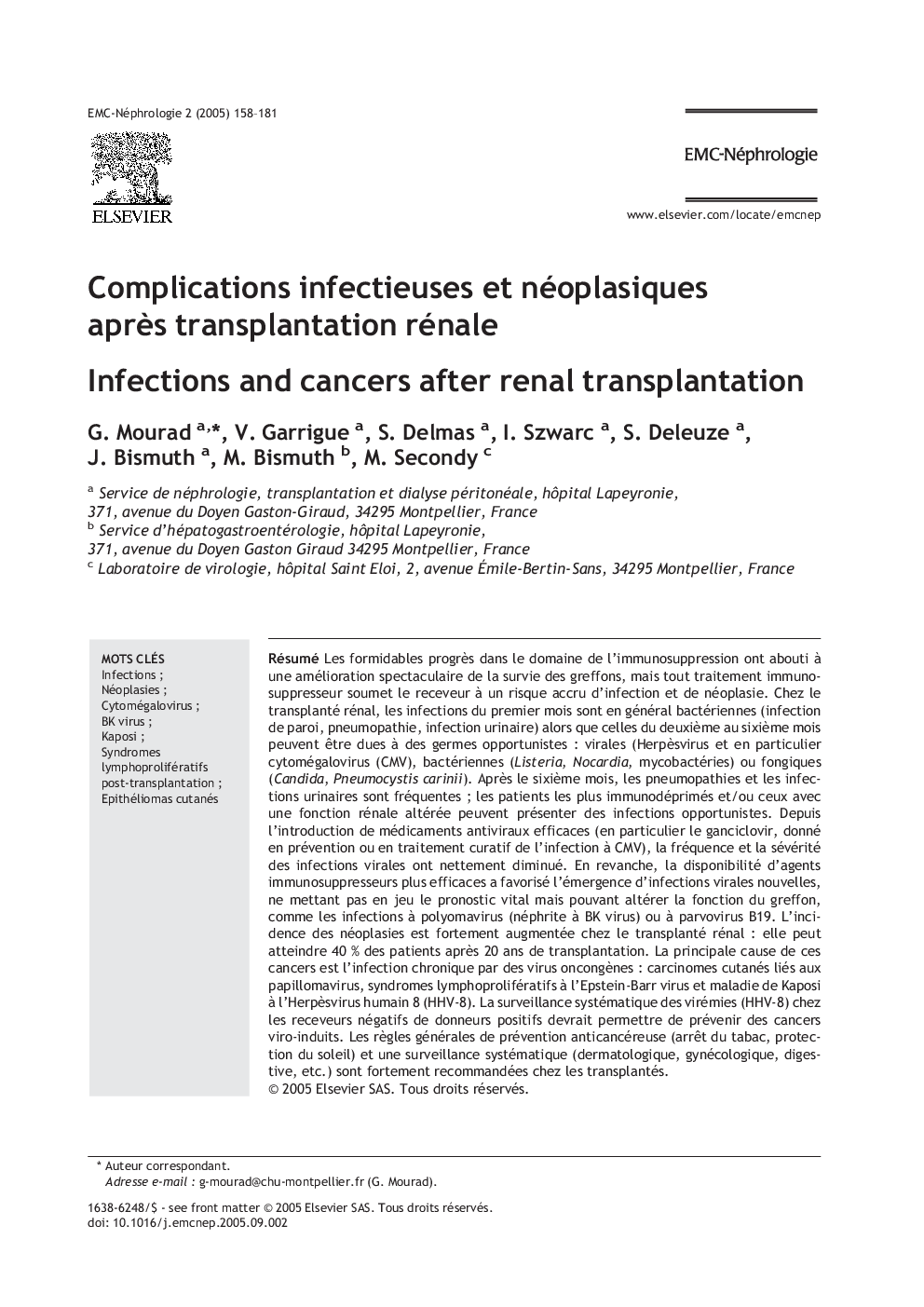| کد مقاله | کد نشریه | سال انتشار | مقاله انگلیسی | نسخه تمام متن |
|---|---|---|---|---|
| 9307913 | 1598536 | 2005 | 24 صفحه PDF | دانلود رایگان |
عنوان انگلیسی مقاله ISI
Complications infectieuses et néoplasiques après transplantation rénale
دانلود مقاله + سفارش ترجمه
دانلود مقاله ISI انگلیسی
رایگان برای ایرانیان
کلمات کلیدی
موضوعات مرتبط
علوم پزشکی و سلامت
پزشکی و دندانپزشکی
بیماریهای کلیوی
پیش نمایش صفحه اول مقاله

چکیده انگلیسی
Despite major improvements in immunosuppressive therapy during the past decade, infections and cancers remain a frequent complication after renal transplantation. Infections are generally due to bacteria during the first post-transplant month (wound, pulmonary, urinary infections) and to opportunistic agents from month 2 to month 6 post-transplant : viruses (herpes-virus particularly cytomegalovirus (CMV), bacteria (nocardia, listeria, mycobacteria) of fungi (candida, pneuymocyistis carinii). After month 6, urinary and pulmonary infections are frequent and those recipients with over-immunosuppression and/or unsatisfactory graft function may experience opportunistic infections. Since the availability of antiviral drugs, particularly ganciclovir used for prophylaxis or treatment of CMV infection, the incidence and the severity of viral diseases had significantly decreased. However, due to higher efficacy of new immunosuppressive drugs, “new” viral infections (polyomavirus, parvovirus, west-nile virus) had emerged in the transplant population. BK virus nephropathy is now a new cause of graft dysfunction. Maligrances occur much more frequently in the transplant than in the general population ; twenty ears post-transplant, incidence of cancer may be as high as 40 %. The main cause of cancer in the transplant population is chronic replication of oncogenic viruses promoted by immunosuppression. In fact, the most frequent malignancies are skin cancers due to papillomaviruses, post-transplant lymphoproliferative disorders (PTLD) due to Epstein-Barr virus, Kaposi sarcoma associated with HHV-8 and hepatocarcinomas associated with B or C hepatitis viruses. In HHV-8 or EBV donor positive/recipient negative pairs, regular monitoring of viremia should provide a mean of detecting patients at risk of developing Kaposi sarcoma or PTLD in order to prevent malignancies.
ناشر
Database: Elsevier - ScienceDirect (ساینس دایرکت)
Journal: EMC - Néphrologie - Volume 2, Issue 4, November 2005, Pages 158-181
Journal: EMC - Néphrologie - Volume 2, Issue 4, November 2005, Pages 158-181
نویسندگان
G. Mourad, V. Garrigue, S. Delmas, I. Szwarc, S. Deleuze, J. Bismuth, M. Bismuth, M. Secondy,